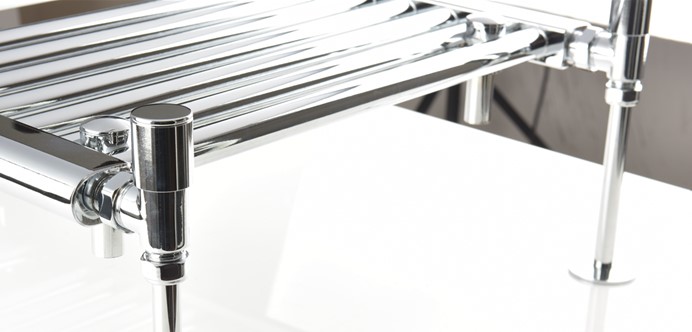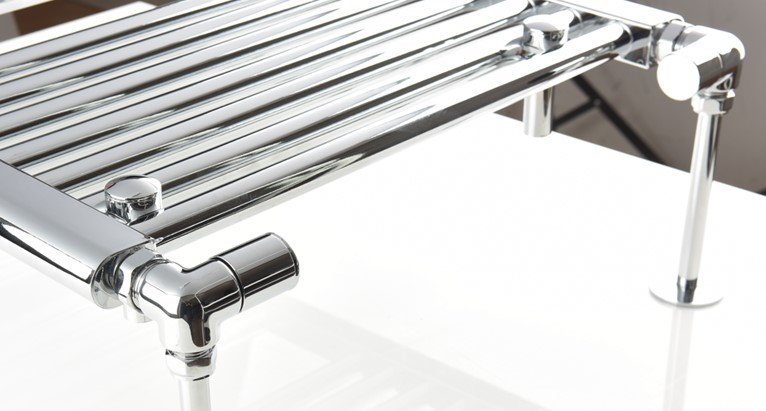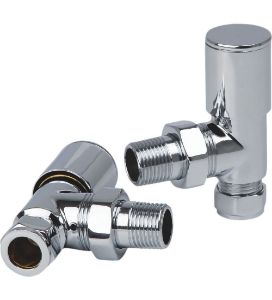There's an ongoing debate among installers and DIY enthusiasts about which type of radiator valve is the best choice for towel radiators when the pipe work is embedded to back wall and the tip of the pipes are coming out from the wall. With this setting, either an angled or corner valves can be used but which one is the best and why? Understanding the differences between these options can help you make an informed decision that suits your needs and bathroom layout. Here’s a look at the pros and cons of each type to help you figure out which one is right for you.
First up is the good old angled radiator valves:
Angled valves are positioned at a 90-degree angle to the towel radiator where the valve tail is vertical to it's inlets and compression part is horizontal to the floor, facing the back wall. Here is a picture of angled radiator valves installed on a towel radiator:

Pros over Corner Valves:
- They are widely available in many different shape, finish & design
- They can be used on both towel rails and standard radiators
- They are slightly cheaper than corner ones
- They are more accessible and easy to reach to adjust water flow
Another positive aspect of angled valves is their stylish designs. Many manufacturers produce models available in diverse finishes and styles, allowing you to match them with your towel radiator and overall bathroom aesthetic. Fitting an angled valve can enhance both functionality and appearance. However, there are also some disadvantages associated with angled valves. They may not fit neatly in every installation scenario, particularly in tight spaces where a more compact solution might be necessary. Additionally, they can take up a bit more room than corner valves, possibly creating hindrances in smaller bathrooms. Walking too close, one can easily knock their leg/knee on the radiator handle.
Second is the relatively new corner valves:
As opposed to its big brother angled, corner valves have 90-degree angle twice on the valve body where the valve tail is vertical to towel radiator and the compression part is horizontal to the floor also facing the back wall. Main difference is that the handle of the corner valve is turned inward which sits right below the bottom bar of a towel radiator. Here is a picture of corner radiator valves installed on a towel radiator:

Pros over Angled Valves:
- Pipe work connection will be tidier compared to angled version
- Valve handle will not protrude and stick out further from the towel rad
- Total projection of the towel rail & valves will be smaller
- Ideal to use when towel rails are installed behind the doors
Corner valves are designed to fit snugly into underside of the bottom bars, making them an excellent option for save space. If your towel radiator will be positioned behind a door, corner valves can minimize protrusion into the room, making your space feel larger and more open. This style can also lend itself well to a clean and tidy look, as less visible piping is showcased. Notably, corner valves are often easier to install in certain layouts, especially when working with limited space constraints.
When deciding whether to opt for angled or corner valves for your towel radiator, consider your bathroom layout, available space, and personal preferences for style and functionality. Each type has its unique benefits and limitations. If you need flexibility and a wider range of design choices, angled valves may be your best bet. Conversely, if maximizing space and reducing overall projection is your primary concern, corner valves could be the ideal solution. Ultimately, understanding these key differences allows you to make a choice that enhances both your heating efficiency and the overall aesthetic of your bathroom. Take the time to explore your needs and find the right fit for your home.







